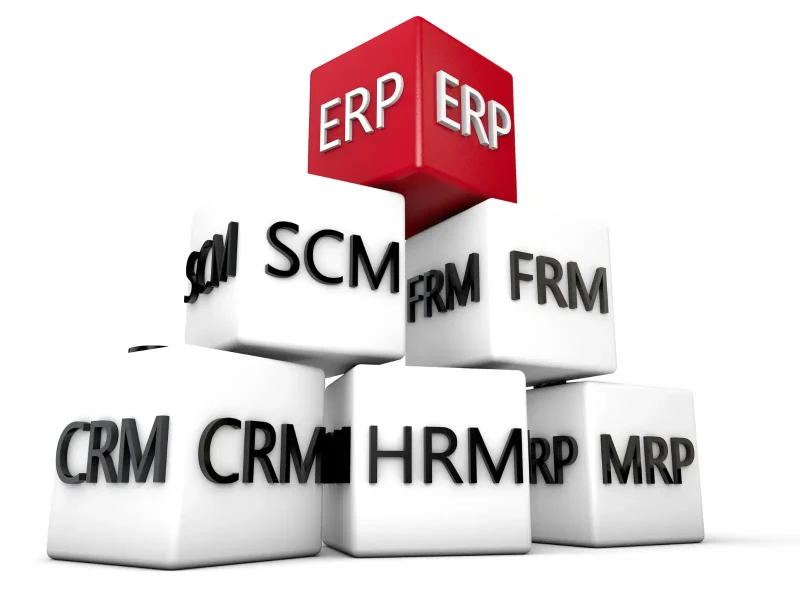case studies
SAP ECC to S/4HANA Migration Case Study: Middle East Retail Giant
Noel DCosta
- Last Update :
So, this is my favorite case study! This SAP ECC to S/4HANA migration case study looks at a well-known Middle Eastern retailer that had leaned on ECC for many years. The system had done its job, but after so much custom coding, it became harder to manage.
The biggest problem was the customization. 44% of the system objects were customized which was significantly large. As you can imagine, these customizations came in over a period of time.
Small fixes dragged on, and the effort to keep it stable outweighed the value it was bringing. Leadership eventually admitted the platform was slowing them down instead of helping.
The move to S/4HANA turned into more than an IT exercise. It became a chance for the business and IT teams to tidy up processes that had quietly piled up over time.
I remember a session where the supply chain team laughed a little when they admitted that dozens of their “critical” reports were barely touched anymore. Cutting them away was both practical and oddly freeing.
Some real outcomes stood out:
Finance teams said their monthly close finished before lunch, where it once pushed into weekends. The CFO was most pleased that he could have his reports much faster!
Store promotions went live faster, which meant fewer late-night support calls. This became a streamlined process.
Custom code dropped by nearly half, lowering the long-term support burden. SAP Signavio played a huge role in this.
Data ownership, especially around loyalty programs, caused long debates, which slowed things but forced useful decisions.
Integrating with older retail tools turned out trickier than planned, yet it highlighted where sequencing really mattered.
People’s reactions often told the story better than metrics. One finance lead joked that the system finally worked “faster than the coffee machine.” That kind of moment gave more confidence than any slide deck could.
The path was not easy by any means, but the end result was a simpler backbone for the business. For more practical insights, see ECC to S/4HANA migration and guidance on SAP project planning and control.

This SAP ECC to S/4HANA migration case study shows how a Middle Eastern retailer with 18,000 employees across 7 countries simplified a heavily customized ECC system where 44% of objects were custom. The move reduced technical debt, stabilized complex integrations, and gave business teams faster reporting and agility that SAP ECC could no longer support.
10 Key Takeaways on SAP ECC to S/4HANA Migration Case Study
The retailer had stayed with SAP ECC for years, but 44% of its objects were customized. This level of customization made stability harder, and every small fix turned into a drawn-out effort.
The move to S/4HANA became a transformation exercise, rather than just an upgrade. Business and IT teams jointly questioned the old processes that existed and decided which ones were truly important.
Reports once labeled “critical” were not even used. Cutting them removed clutter and reduced support demands.
Finance teams experienced quick results. Month-end close, which had consumed entire weekends, was completed before lunch. The CFO openly valued faster access to reports.
Store promotions reached outlets faster, with fewer overnight calls to IT. This simplified what had once been a stressful routine.
Customization in code was greatly reduced, with SAP Signavio helping to define the new processes, based on best practice.
Although there were debates about the loyalty program data ownership which slowed the project a little, it forced clarity on responsibilities that had long been ignored.
Older retail systems created integration challenges. Sequencing the migration steps properly proved just as important as the technology itself.
Small user reactions told the story best. A finance lead joked that S/4HANA was finally faster than the coffee machine, which meant trust was built.
The end result was not all perfect, but it was solid. Processes were simpler, IT was lighter, and the business gained a foundation to grow further. For related context, see why SAP data migration fails and change management plan success.
The Background of the SAP ECC to S/4HANA Migration Case Study

This SAP ECC to S/4HANA migration case study focuses on the shift from a ten-year-old ECC landscape to S/4HANA. The system had supported growth for a long time, but the longer it stayed in use, the heavier it became.
The business leaned on the SAP ECC 6.0 landscape for nearly everything, and that left IT struggling to keep up with new demands. So, let me give you a background of this case study.
10 years of SAP ECC in production created a large and complex footprint. The initial implementation was fairly standard, but over time it grew into something much harder to manage. Every year brought more WRICEFs and more complication.
44% of objects were customized, which was alarmingly high when measured. These changes came in bit by bit, usually in response to urgent needs. Nobody realized how much had piled up until it became clear that even simple updates carried risk. The SAP ECC environment had turned fragile, and stability came at a cost.
Integrations were messy and poorly managed. ECC was tied into POS platforms, warehouse management, finance, HR, and multiple vendor portals. Teams often complained that a small change in finance could unexpectedly break something in retail operations. It sounded like a joke, but it was not.
Technical debt kept growing. Maintenance costs consumed more budget every year, and IT leaders began to track hours lost to break-fixes. The numbers only went one way. For comparison, see how similar issues are addressed in SAP project risk assessment.
The business–IT relationship was strained. The business side asked for flexibility and faster response. IT was consumed by firefighting. Both sides admitted they were working at cross-purposes.
In the end, the SAP ECC landscape was no longer an enabler. It had become a barrier. The custom code, the integrations, and the ongoing firefighting forced the retailer to admit that simplification was not optional anymore.
Case Study Client Profile: Middle East Retail Group
| Category | Details |
|---|---|
| Client | A Middle East retailer in fashion and consumer goods with brick-and-mortar stores and strong online sales. |
| Size & Reach | Around 18,000 employees across 7 countries in the region, with more than 1,200 outlets and an active e-commerce channel. |
| Key Processes |
|
| Program Objective | Move from ECC 6.0 to SAP S/4HANA, cut custom code, improve close speeds, and enable real-time insights across retail operations. |
| Initial Challenges |
|
| Key Differentiator | The program balanced clean core goals with high-volume retail needs, while planning cutovers around late-night trading and regional peak seasons. |
SAP ECC to S/4HANA Migration Case Study: Drivers for Change

I have to say, this SAP ECC to S/4HANA migration case study grew from a simple truth. The SAP ECC core had reached a point where keeping it alive cost more energy than moving forward. I remember the room going quiet when the maintenance projections came up, which told its own story.
1. SAP ECC end of mainstream support
Because SAP ECC was approaching end of mainstream support, the leadership faced a timing decision that could not wait. The option of extended maintenance looked expensive and limiting. This is the same problem faced by many companies, still using SAP ECC 6.0.
Since a straight uplift or upgrade would only push problems forward, the team weighed migration pathway choices e.g. Greenfield, Brownfield etc. I have provided some guidance in my article on S/4HANA migration strategy. The discussion shifted from tools to outcomes, which was a healthier discussion (something I always propose).
As maintenance costs got more expensive, the CFO asked for a clearer business case. The principle was simple – reduce cost and let the implementation pay for itself. The structure in my article on building a winning SAP business case helped frame cost, risk, and value in a way the board could support.
Because risks needed early control, we planned stage gates that mirrored the approach in SAP quality gates. I think that discipline kept noise down when pressure rose.
2. Real-time reporting and simplification needed
Since store decisions lose value when numbers arrive late, operations pushed hard for faster, trusted reporting. The performance focus drew on ideas from SAP performance testing, which kept everyone honest about throughput.
Because the legacy footprint carried years of WRICEFs, we leaned into a clean core mindset. This is so very important. You want to keep your core clean and build your customizations over BTP. Keeping the core clean helps in future upgrades. The practical guardrails in SAP clean core strategy helped them decide what to retire and what to keep.
Data migration was a key component. As data issues surfaced, the team revisited staging and cutover plans. Data was considered as important and dedicated teams worked in data cleansing. I’ve realized over time that data is often considered during the project and not before. I still prefer over-communicating here, since small mistakes can blow out of proportion.
Because every report request competes for time, we aligned scope and ownership with the playbooks in project scope management. The trimming felt tough, yet people later said the dashboards finally made sense.
3. Digital transformation alignment
Since this Retail client’s roadmap leaned into omnichannel growth, the core platform had to support faster change. The clean core strategy along with a strong integration approach play together in this space. The goal was ERP modernization and not an upgrade.
Integration strategy and patterns decide day-to-day stability and we all know that. In this case, we mapped interfaces and I documented my views in this article – SAP integration platforms. Some integrations stayed, many were rebuilt, and a few quietly went away. The goal was to reduce complexity and focus on simplicity.
As roles shifted, we worked stakeholder routines from stakeholder management strategy. People wanted a voice, and regular forums reduced side conversations that usually slow a program.
Adoption was the heart of the program. 26,000 employees in 6 countries is no joke indeed. Since adoption pays the benefits, we prepared training and change plans using change management plan success. A store lead later said the simple job guides did more than any town hall, which I partly agree with.
In the end, the modernization drivers were clear. The SAP end of support set the clock, while business agility and a retail digital strategy set the direction. The mix felt slightly messy at times, yet it kept the program real and grounded.
Case Study Drivers: SAP ECC to S/4HANA Migration
| Category | Summary |
|---|---|
| SAP ECC End of Support |
The system had reached a stage where maintaining it was more costly than moving forward.
Key points included:
|
| Real-Time Reporting & Simplification |
Faster reporting and simplification became urgent for retail operations.
|
| Digital Transformation Alignment |
The migration supported a broader retail transformation agenda.
|
Assessment and Strategy for the SAP ECC to S/4HANA Migration Case Study

One thing I noticed in this SAP ECC to S/4HANA migration case study is that we had more clarity when the S/4HANA readiness assessment began. The tools told us what many already suspected.
The landscape had grown heavy and moving it as-is would only repeat old mistakes. Strategy therefore mattered as much as execution.
1. SAP Readiness Check and Simplification List
- The team ran the S/4HANA readiness check early, which flagged hundreds of items tied to custom code, obsolete transactions, and mandatory process changes. Honestly, this is your starting point. The list was much longer than we expected, yet it gave structure to what could have felt overwhelming.
- The Simplification Item List showed where the standard S/4HANA footprint already replaced what SAP ECC had relied on. Finance discovered that some long-maintained custom reports were now redundant. The relief in that meeting was obvious.
- The Custom Code Analyzer helped identify technical debt in detail. Out of thousands of custom objects, only a fraction were truly critical. I remember developers admitting that some custom routines had not been touched in years.
- Lessons from SAP quality gates influenced how these assessments were sequenced. Setting clear checkpoints kept everyone from drifting too far before decisions were made.
2. Sorting Redundant and Critical Customizations
- Since 44% of objects were customized, the biggest challenge was separating useful code from noise. The readiness results acted as a filter.
- Business and IT sat together to tag each object. Some were clearly redundant, like reports no one could remember running. Others supported unique retail processes that needed careful redesign. It forced teams to decide, not postpone.
- A few debates dragged on, especially around loyalty programs. Yet even those arguments gave clarity about ownership, which mattered more in the long run.
3. Migration Approach: Brownfield with Selective Redesign
- The migration approach leaned toward brownfield because it protected existing investments. However, selective redesign was deliberately built into the plan, after the approval from the Program Steering Committee.
- By choosing this path, the company avoided the shock of a full greenfield while still addressing long-standing process pain points. The trade-off felt practical.
- We reviewed strategies from greenfield vs brownfield. That resource helped frame decisions in language both technical and business leaders could accept.
- Some managers worried that brownfield meant “lift and shift.” The response was that selective redesign gave enough room to simplify without losing continuity.
4. Roadmap and Phased Rollout
- The roadmap was phased. Core finance and supply chain moved first, with HR and vendor portals scheduled later. This sequencing reduced risk by not overloading support teams.
- Planning used guidelines from project planning and control. Breaking milestones into smaller, accountable chunks gave everyone more confidence.
- Each rollout phase was aligned with peak and low retail cycles. Stores could not afford system downtime in high season, so timing was non-negotiable.
- Resource allocation helped to balance resource workloads. Teams avoided burnout, though I remember weekends where coffee ran short.
At the end of the assessment, we confirmed what the business had sensed for years. The SAP ECC landscape has been customized a lot and the move to S/4HANA had to happen right.
The roadmap, grounded in readiness checks and custom code analysis, was less about ticking boxes and more about creating a platform that could finally keep pace with business change.
S/4HANA Readiness and Migration Approach
| Area | Key Points |
|---|---|
| Readiness Assessment |
|
| Custom Code Sorting |
|
| Migration Approach |
|
| Roadmap & Rollout |
|

See How I Make Your ERP and AI System Selection or Implementation right for you.
ERP & AI System Selection – Identify and choose the right ERP or AI-enabled platform to fit your business needs.
Project Support & Recovery – Keep your project on track or bring failing implementations back under control.
ERP Modernization – Transform existing ERP systems to modern, efficient, and scalable ERP environments.
GET IN TOUCHRelated Articles: ERP Selection and Integration Challenges
Choose the Right ERP for Small Business Operations in 2025
An examination of how small enterprises can select ERP systems suited for cost, scale, and growth in 2025.
ERP System Selection for a Mid-Sized Manufacturer in Asia
A real-world example of ERP evaluation, focusing on manufacturing priorities in an Asian context.
Oracle ERP vs SAP
A side-by-side breakdown of two major ERP platforms with practical considerations for decision-makers.
SAP Integration Suite Delivery Delays
Insights into recurring bottlenecks in SAP Integration Suite rollouts and lessons for project managers.
The Migration Approach We Followed in SAP ECC to S/4HANA Migration Case Study

Our approach was to stay practical, and we had to consider trade-offs. That’s why, in this SAP ECC to S/4HANA migration case study, we needed a plan that would work and the team could follow. There were several areas that we needed to consider in our approach:
1. Custom code strategy
The team retired redundant objects and adapted roughly 56% of the critical ones. The split of the objects came from joint reviews that paired process owners with the SAP Implementation team. This was a very detailed exercise, but it brought all teams together to drive the right outcomes.
We used automated remediation where it made sense, with smartShift supporting code scans and quick fixes. The intent was to speed up low-value changes while reserving time for redesign. Why was smartShift selected? This is because it automates SAP ECC to S/4HANA conversions and fixes the custom code compatibility issues.
A clean-core mindset guided decisions, supported by the practices in SAP clean core strategy. This kept custom code focused on true retail differentiators. What really helped was the Steering Committee enforcing the principle to use the SAP standard and limit the customizations to the bare minimum.
Test depth mattered, so we aligned unit testing, SIT, UAT and regression coverage with ideas from SAP testing and validation tools. People slept better when we could show evidence. It was a really detailed exercise, and we used Cloud ALM to track the testing lifecycle.
2. Data migration path
We executed technical conversion using SAP SUM with DMO, and we staged business data through the SAP Migration Cockpit. This sequence reduced handling and reduced risk during cutover.
Data quality rules were defined early, and exceptions were tracked daily. The cautionary lessons in why data migration fails helped us stop scope drift before it spread. I personally recommend that you define your data migration strategy ahead of time. Please be detailed in your approach and include KPIs for each of your mock testing.
Performance targets were measured on each rehearsal using guidance from SAP performance testing. I think those checks saved us from a few unpleasant surprises.
3. Integration and interface redesign
We simplified integration patterns and replaced brittle point-to-point links with API-first designs. The reference material in SAP integration platforms shaped our selection of middleware and monitoring.
Where message flows remained complex, we used SAP CPI patterns to standardize mappings, error handling, and retry rules. The goal was fewer issues and faster triage.
The ownership for the Interfaces moved to the product teams with agreed SLAs. That shift in responsibilities, although it was small, created faster decisions and fewer escalations.
4. Rehearsals and cutover readiness
During the cutover, we ran sandbox conversions first, then dress rehearsals with full data volumes. Each pass used checkpoints and entry or exit criteria modeled on SAP quality gates.
Cutover plans were time-boxed and versioned, with roles, fallbacks, and stop-go rules documented using practices from project planning and control. The checklists felt long, yet they kept nerves steady. Having a detailed cutover plan is better than having a high level one, where mistakes can happen.
Resource loading followed the ideas in resource allocation planning. Weekend shifts were rotated, and support handovers were scripted to the minute. You need this to avoid fatigue for the team.
Post-go-live hypercare used clear SLAs, a shared war-room, and daily action logs. People usually remember numbers, but I remember the first quiet night most.
In short, the migration roadmap balanced SAP SUM DMO mechanics, S/4HANA data migration discipline, and an integration strategy that removed fragile links. The structure felt simple on paper, and it felt workable in practice.
Approach to SAP ECC to S/4HANA Migration
| Focus Area | Key Actions |
|---|---|
| Custom Code Strategy |
|
| Data Migration Path |
|
| Integration & Interfaces |
|
| Rehearsals & Cutover |
|
Key Challenges we faced in this SAP ECC to S/4HANA Migration

The challenges we faced, were not surprising, although the depth of each one needed careful handling. Some of the key challenges we faced were:
1. Managing 44% customized objects
Because nearly half the landscape was custom, we first grouped objects by business value and technical risk. The clean-core lens in SAP clean core strategy kept the team focused on what truly differentiated retail operations. I have to say that going through smaryShift actually simplified the process for us.
Since blind remediation creates confusion, we paired developers with process owners to decide retire, replace, or refit. The scope boundaries that we usually use in project scope management helped stop the slow creep that follows.
As confidence grew, we set quality gates with measurable exit criteria. I think those checkpoints saved weeks of rework. But more than anything, the quality gates helped us to understand and keep track of what we were implementing, based on the SAP standard.
2. Regression with downstream systems
We all know that integrations were fragile and hence, we built a regression plan that covered POS, WMS, finance, HR, and vendor portals. The monitoring ideas in SAP integration platforms guided our approach to alerts and retries. Hence, when we completed a configuration for Accounts payable (as an example), we always tested the end-to-end process to ensure nothing was broken.
Since some integrations needed rework, we standardized mappings and error handling using patterns from SAP CPI. The result was fewer overnight calls and faster triage when issues surfaced.
As performance can hide defects, we validated throughput and latency with routines from SAP performance testing. People trusted numbers more than promises, which felt fair.
3. Data quality and cleansing
We know that data can sometimes break conversions. We set business rules that flagged duplicates, invalid masters, and missing references. The cautionary lessons in why data migration fails helped us focus on root causes, not symptoms.
Since owners often sit outside IT, we assigned data stewards in each function with clear SLAs. The planning habits from project planning and control kept decisions moving when trade-offs felt uncomfortable.
As cutover period approached, we rehearsed loads end-to-end and tracked the defects daily. This simple routine worked better than any fancy dashboard, which still surprises me. It did take some time to come up with the cutover schedule, but because we ran multiple review iterations, we were able to get it right.
4. Business Change adoption and Change Management
Adoption should pay the benefits. We built a practical change plan using change management plan success. The plan tied training to actual job tasks, not just modules. I always encourage teams to focus on the process rather than tasks.
Since stakeholders pull in different directions, we ran routines from stakeholder management strategy. Regular forums lowered tension and reduced side agreements that normally slow delivery.
As pressure rose near go-live, we used role-based job guides and floor-walks. The approach leaned on ideas from training strategies for employees. A store lead later said the two-page guide mattered more than any town hall.
Because KPIs keep teams honest, we tracked cycle times, first-time-right rates, and help-desk themes using guidance in ERP implementation KPIs. The early trendline gave leadership the confidence to hold the course.
In the end, these SAP migration risks were manageable because the team stayed disciplined. The mix of custom code challenge, data cleansing effort, and human change was not simple, yet steady routines turned the curve in our favor.
Key Challenges in SAP ECC to S/4HANA Migration
| Challenge | Details |
|---|---|
| Managing 44% Customized Objects |
|
| Regression with Downstream Systems |
|
| Data Quality and Cleansing |
|
| Business Change and Adoption |
|
“When I first looked at our ECC system, I thought the custom code was just how things worked. What I did not see was how much it slowed us down. The readiness check opened my eyes. Almost half of it was custom objects that added little value. Moving to S/4HANA helped us cut that out. The biggest win was giving our teams time back to focus on growth instead of fixing problems.” – CIO, Middle Eastern Retail Company
Related Articles: ERP Modernization and Strategy Insights
10 ERP Modernization Mistakes to Avoid in Your ERP Strategy
A detailed look at common pitfalls in ERP modernization projects and how to prevent them.
Oracle ERP vs SAP: What Every CEO, CFO or CIO Must Consider
Key decision points for executives evaluating Oracle ERP and SAP in terms of cost, scale, and long-term value.
Choose the Right ERP for Small Business Operations in 2025
Guidance for small enterprises selecting ERP solutions tailored for agility, cost, and growth in 2025.
ERP System Selection for a Mid-Sized Manufacturer in Asia
A case study on ERP evaluation and selection challenges faced by a manufacturing firm in Asia.
The Execution Process in the SAP ECC to S/4HANA Migration

I’m sure by now you understand by now that this S/4HANA migration case study shows that execution had to be paced carefully. In our case, each phase in our project served a purpose, and cutting corners would have caused a problem later.
Of course we followed the SAP Activate approach, but I want to elaborate on the key things we did:
1. Phased execution Based on SAP Activate
- Our configuration and testing went through Sandbox, Dev, QA, Dress Rehearsal / Pre-production and Go-live.
We first validated the path in Sandbox and locked scope with SAP Activate templates. This gave the team a baseline without overdesigning.
In Dev, we hardened transports and applied quality gates by workstream. Criteria were kept simple, otherwise people would get lost in process.
QA cycles ran with real business volumes. Jobs were tuned before bottlenecks became visible. Strong project planning and control helped keep dates realistic.
Pre-Production became a rehearsal of cutover rather than theory. The go-live playbook, aligned per store and warehouse.
2. Parallel testing with business units
Finance and Supply Chain leads tested against actual period close and promotions, which forced scripts to reflect business reality. I remember when we reviewed our test scripts, it was a very elaborate exercise.
Defects were logged against business priority, not just technical severity. This approach drew from common sense but echoed KPI-driven ERP practices.
Night runs exposed timing issues. I recall a warehouse lead smiling when the second cut ran smoothly after weeks of frustration. Huge sigh of relief!
3. Cutover rehearsals to minimize downtime
Every task was timed, trimmed, or merged. The dry run alone saved hours that a spreadsheet never revealed.
Fallback checkpoints for data loads were kept short, and recovery plans sat as one-page handouts. People said that simple list reduced stress more than any dashboard.
A store pilot proved POS and WMS stability. Lessons there shaped the broader rollout approach.
4. Hypercare post go-live
The war room stayed joint between IT and business, with clear ownership. Issues were closed in sprints, which gave business leaders visible confidence.
Role-based guides and walk-throughs reduced support calls. This tied back to training strategies the project team had shaped earlier.
Cost tracking was published openly. Incident burn-downs were paired with savings updates, reflecting good practice in budget management.
Execution, in short, was less about tools and more about pacing. Each step in the project phases, from Sandbox to hypercare support, shaped adoption in a way no slide deck could have predicted.
Results & Benefits From this Implementation

I’ve got to say – Numbers helped, but the small changes to how work got done told an even stronger story. So this is what we achieved:
1. Reduced custom footprint and lower TCO
Nearly half of the custom code was removed, which made the system lighter.
The cost of keeping the lights on dropped, and money freed up for upgrades and training.
The move lined up with ideas from the SAP clean core strategy, where fewer custom objects mean less risk in the future.
2. Faster reporting and Real-time Analytics and Self Service
Finance teams said month-end close could take 5 business days instead of stretching into a couple of weeks.
Real-time reporting gave retail managers the chance to adjust promotions on the same day, not days later.
The experience reminded me of how SAP Analytics Cloud puts reporting at the center of decision making, not as something you look at after the fact.
3. Enhanced user experience with Fiori apps
Store managers started using Fiori apps instead of the old SAP ECC screens that slowed them down.
Training time fell because the apps worked in ways people already understood. One manager even called it “refreshing.”
The result matched what I saw in SAP training strategies, where comfort leads to adoption more than any mandate.
4. Improved system integration and performance
Links between POS, WMS, and Finance became steadier, with fewer knock-on problems.
Batch jobs finished quicker overnight, which meant warehouse teams had reports waiting with their morning coffee.
Careful planning made the difference, much like the lessons in SAP performance testing.
Some teams still clung to old reports even when better ones were ready. Change did not land evenly everywhere. But overall, the migration gave the retailer a simpler backbone and a level of efficiency that ECC could no longer provide.
Lessons I Learned from this Client Engagement

Looking back at this S/4HANA migration engagement, a few lessons stood out for me, more than others. They came from real situations, and sometimes from mistakes that costed us time and sleepless nights.
1. Early stakeholder alignment
The project went smoother once business and IT leaders spoke openly from the start. Workshops gave space for teams to bring up concerns that might have stayed hidden.
One session sticks in my mind where store managers said their reporting needs were different from finance, which forced everyone to adjust. Without that early alignment, the conflict would have shown up right before cutover.
Workshops surfaced problems early
Reduced last-minute friction between teams
2. Custom code optimization
We left code review too late, and that slowed the project. Several custom objects had to be rewritten quickly, which created pressure. If we had applied clean core thinking earlier, as stressed in the SAP clean core strategy, the team would have avoided that scramble.
Late reviews created rework
Clean core guidance came in too late
3. Data quality should be your top priority
Our testing phase dragged out only because our master data was messy. Duplicate vendor records and outdated entries wasted hours. No system can deliver if the data underneath is weak. It reminded everyone why many SAP data migration projects fail.
Poor master data slowed testing
Cleansing should have been finished much earlier
4. Multiple rehearsals minimize risks
Rehearsals felt tiring at times, but they exposed real problems. One dry run revealed sequencing conflicts between POS and WMS that no one had predicted.
Every practice round made the teams calmer, especially those running night operations. The approach mirrored lessons from project planning and control.
Rehearsals caught issues that we did not anticipate.
They also built confidence before go-live
Not everything landed perfectly. Some felt workshops were too long, others thought rehearsals were repetitive. Yet in hindsight, those steps were the safety net. Without them, the migration would not have held steady.
Lessons Learned from SAP ECC to S/4HANA Migration
| Lesson | Key Takeaways |
|---|---|
| Early Stakeholder Alignment |
|
| Custom Code Optimization |
|
| Data Quality as a Priority |
|
| Multiple Rehearsals |
|
| Overall Reflection |
|
Test Your SAP Migration Knowledge
How well do you understand ECC to S/4HANA migrations?
Conclusion
This was a long article and if you made it this far, you will gather that this SAP ECC to S/4HANA migration case study shows how the retailer company not only modernized its systems but also created a foundation for long-term agility.
The SAP ECC environment, which was a decade old, had become fragile. Moving to S/4HANA allowed the business to simplify its processes, remove unnecessary custom code, and stabilize its integrations to third party systems.
The move also ensured that the IT landscape could scale with future growth, which is essential in the fast-moving retail sector.
The transition also positioned this client more confidently in a cut-throat market. With real-time analytics, the finance teams could not close their books faster, and store operations acted on real time stock data instead of waiting days.
Partner integrations became less fragile, following methods described in SAP integration platforms. The improvements were not perfect, since some users kept asking for old reports, but the overall retail transformation made the shift worthwhile.
Key points that stayed with the teams include:
Reduced custom footprint lowered TCO, freeing budget for upgrades and training.
Finance and retail operations gained real-time reporting, cutting delays.
Fiori apps improved user adoption and reduced training time.
Multiple rehearsals and strong alignment with the business and IT teams minimized the cutover risks.
In the end, it showed that the effort was definitely worth it. The business finally had a system that was lighter to run, and IT no longer spent most of its time fixing what broke yesterday.
People said it felt less like a burden and more like something they could actually grow with. The retailer walked away with a platform that could handle change without slowing everyone down.
If you have any questions, or want to discuss a situation you have in your ERP Implementation, please don't hesitate to reach out!
Questions You Might Have...
1. Why do companies move from SAP ECC to S/4HANA?
If you are still on ECC, you already know support is running out. I have seen companies spend more on keeping ECC alive than on moving forward. In one SAP ECC to S/4HANA migration case study, even a small update felt risky. By moving, you cut down technical debt, simplify the system, and finally get real-time reporting that ECC never gave you.
2. What does a readiness check actually tell you?
When I run a readiness check, it usually confirms what you suspect. The system is heavier than it should be. It flags custom code, old processes, and changes you must make. I once saw a finance team realize half their custom reports already existed in S/4HANA. You will probably find the same.
3. Is custom code really such a big issue?
Yes, and I want you to know how big. In one project, 44% of the objects were custom. Nearly half. Many of those had not been touched in years. The real work is sitting with your business users and deciding which ones stay and which ones can finally go.
4. What if you skip data cleanup?
You will regret it. I have seen poor data drag out testing for months. In one case, duplicate vendor records caused so many delays that cutover rehearsals nearly collapsed. If you start early, you avoid that pain. Assign owners and get records cleaned before you test.
5. Should you choose Greenfield or Brownfield?
You have to decide how much change you are ready for. Greenfield is a full rebuild, but it is costly and disruptive. Brownfield protects your old investments but can carry baggage. I often suggest Brownfield with selective redesign. It gives you balance.
6. Why keep running rehearsals?
I know rehearsals feel tiring, but they save you later. In one run, we caught conflicts between POS and WMS that no one had predicted. Every round builds confidence. If you skip this, go-live will feel like a gamble.
7. How do integrations make things harder?
If your ECC connects to POS, WMS, finance, HR, and vendor portals, you already know how fragile it is. I have seen one small change in finance take down retail operations. During migration, we replaced point-to-point links with APIs. That step reduced errors and helped teams solve problems faster.
8. Why does stakeholder alignment matter so much?
Because without it, conflict comes late and costs more. I remember one workshop where store managers said their reporting needs were very different from finance. That surfaced early, and we adjusted. If we had waited, it would have blown up at cutover.
9. What benefits do you see after migration?
You will notice faster reporting first. Finance teams I worked with closed books by lunchtime instead of working weekends. Store managers used real-time dashboards to decide promotions on the same day. IT teams stopped firefighting because custom code was cut down.
10. What lessons should you carry forward?
From what I have seen, four things matter most. Align your stakeholders early. Start cleaning up custom code sooner. Do not push data quality to the side. And run enough rehearsals to feel steady before go-live. If you do these, you avoid the worst surprises.
Related Articles: Finance and SAP Implementation Practices
Finance Process Modernization for a Family-Owned Conglomerate
How a large family business restructured its finance operations through ERP-driven modernization.
SAP Performance Testing: What IT Leaders Must Know in 2025
Critical steps IT leaders need for performance testing in SAP environments to secure system stability.
Oracle ERP vs SAP
A comparison of Oracle ERP and SAP with practical considerations for executives making platform choices.
SAP Integration Suite Delivery Delays
Lessons from integration challenges that slowed SAP Suite rollouts and how teams overcame them.




